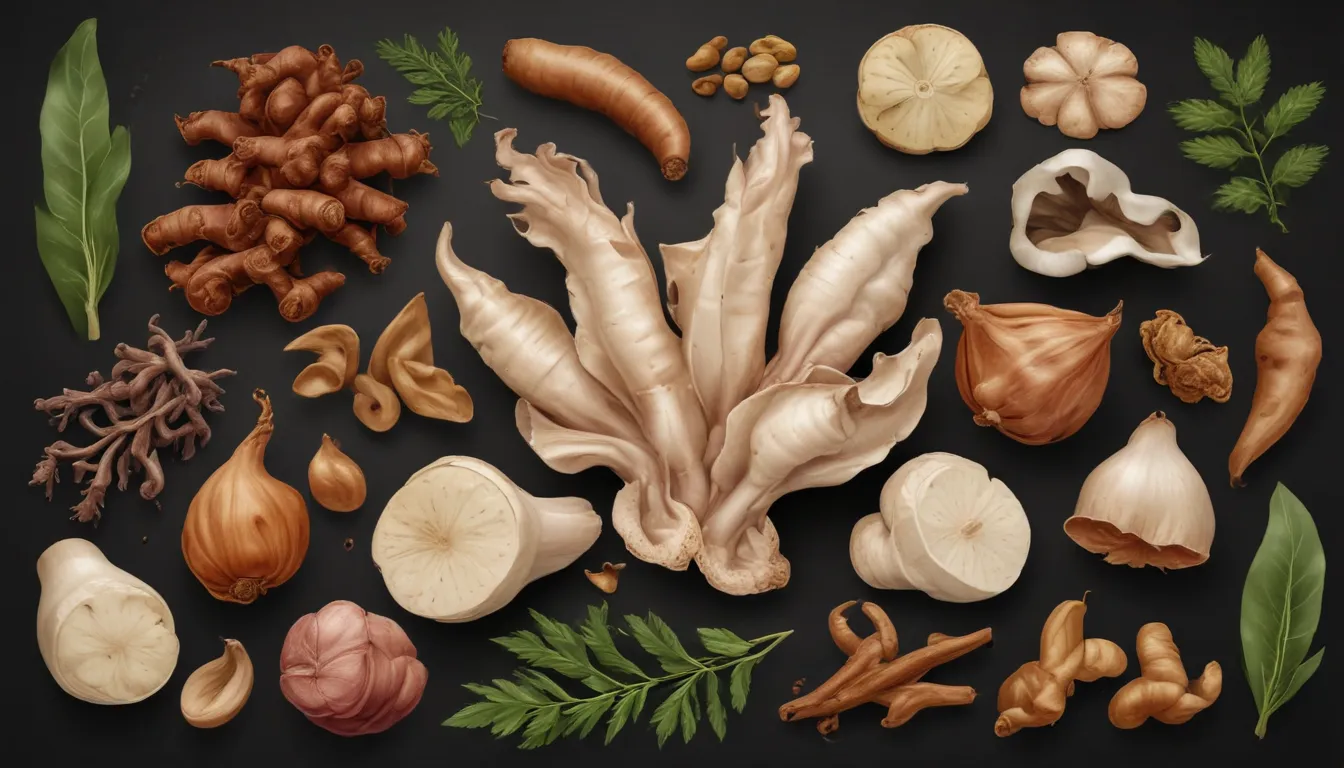The pictures in our articles might not always show exactly what the text is talking about. We use these images to make the article more interesting and eye-catching. They are there to add to the text, but not to replace it or show every detail.
Galangal, also known as “Thai ginger,” is a versatile and aromatic root that is widely used in Southeast Asian cuisine, offering a unique flavor profile that adds depth and complexity to dishes. Beyond its culinary uses, galangal boasts impressive health benefits, making it a valuable ingredient in traditional medicine. Let's delve into 16 fascinating facts about galangal that will not only expand your knowledge of this exotic spice but also inspire you to incorporate it into your cooking repertoire.
Understanding Galangal: Origins and Flavor Profile
Galangal, scientifically known as Alpinia galanga, is a rhizomatous plant native to Southeast Asia, belonging to the ginger family. This aromatic spice is widely used in Thai, Indonesian, and Malaysian cuisines. Galangal has a unique flavor profile that combines citrusy, spicy, and slightly sweet notes. Its intense and earthy aroma is reminiscent of a blend of ginger, pepper, and pine.
Exploring Culinary and Medicinal Uses
Galangal is a staple ingredient in many traditional dishes, adding depth and complexity to curries, stir-fries, soups, marinades, and even beverages like herbal teas. Apart from its culinary uses, galangal is revered for its medicinal properties, including anti-inflammatory, antioxidant, and digestive benefits. It is often used to alleviate symptoms of nausea, indigestion, and respiratory ailments.
Health Benefits of Galangal
- Anti-inflammatory Benefits: Galangal contains active compounds like flavonoids and tannins that possess anti-inflammatory properties, reducing inflammation in the body.
- Rich in Antioxidants: Packed with antioxidants, galangal helps protect the body against free radicals and boosts the immune system.
- Digestive Aid: Known for its natural enzymes that enhance digestion, galangal stimulates bile production, reduces bloating, and alleviates symptoms of dyspepsia.
Galangal: A Therapeutic Ingredient in Traditional Medicine
In Ayurveda and traditional Chinese medicine, galangal is highly regarded for its therapeutic properties, used to treat ailments such as rheumatism, arthritis, and gastrointestinal disorders. The root of galangal offers a myriad of health benefits, making it a valuable addition to various holistic practices.
Incorporating Galangal in Skincare and Aromatherapy
The antimicrobial and anti-inflammatory properties of galangal make it a popular ingredient in natural skincare products. It is believed to reduce acne, promote a youthful complexion, and soothe skin irritations. Galangal essential oil, derived from the rhizome of the plant, is widely used in aromatherapy to promote relaxation, relieve stress, and uplift the mood.
Cultivating and Using Galangal
Galangal can be grown in tropical and subtropical regions, requiring well-draining soil, partial shade, and regular watering. There are two main varieties of galangal: Greater Galangal is widely used in cooking, while Lesser Galangal is primarily used for medicinal purposes. Galangal pairs well with flavors like lemongrass, kaffir lime leaves, coconut milk, and chilies in Southeast Asian cuisine.
Embracing the Traditions and Rituals of Galangal
In some cultures, galangal is considered a sacred plant with protective and purifying properties. It is used in traditional rituals and ceremonies to ward off evil spirits and invite positive energy. Galangal tea, brewed from fresh galangal root, offers a flavorful and aromatic beverage with numerous health benefits.
Frequently Asked Questions About Galangal
- What is galangal?
-
Galangal is a root in the ginger family with a sharp, citrusy flavor, commonly used in Southeast Asian cuisine.
-
How is galangal used in cooking?
-
Galangal is used as a spice or ingredient in savory dishes like curries, soups, and stir-fries, adding flavor and aroma to the dish.
-
Can I substitute galangal with ginger?
-
While galangal and ginger have different flavors, ginger can be a substitute for galangal in dishes if needed.
-
Does galangal have health benefits?
-
Yes, galangal has anti-inflammatory properties, aids digestion, and can help relieve nausea and motion sickness.
-
Where can I find galangal?
- Galangal can be found in Asian grocery stores, specialty markets, or well-stocked supermarkets in the produce section.
Galangal is more than just a spice – it's a culinary treasure with a rich history and a plethora of health benefits. Whether you're seeking to elevate your cooking experience or explore natural remedies, galangal is a must-have ingredient that deserves a place in your kitchen and wellness routine. So go ahead, embrace the wonders of galangal, and embark on a flavorful and holistic journey with this remarkable root!






